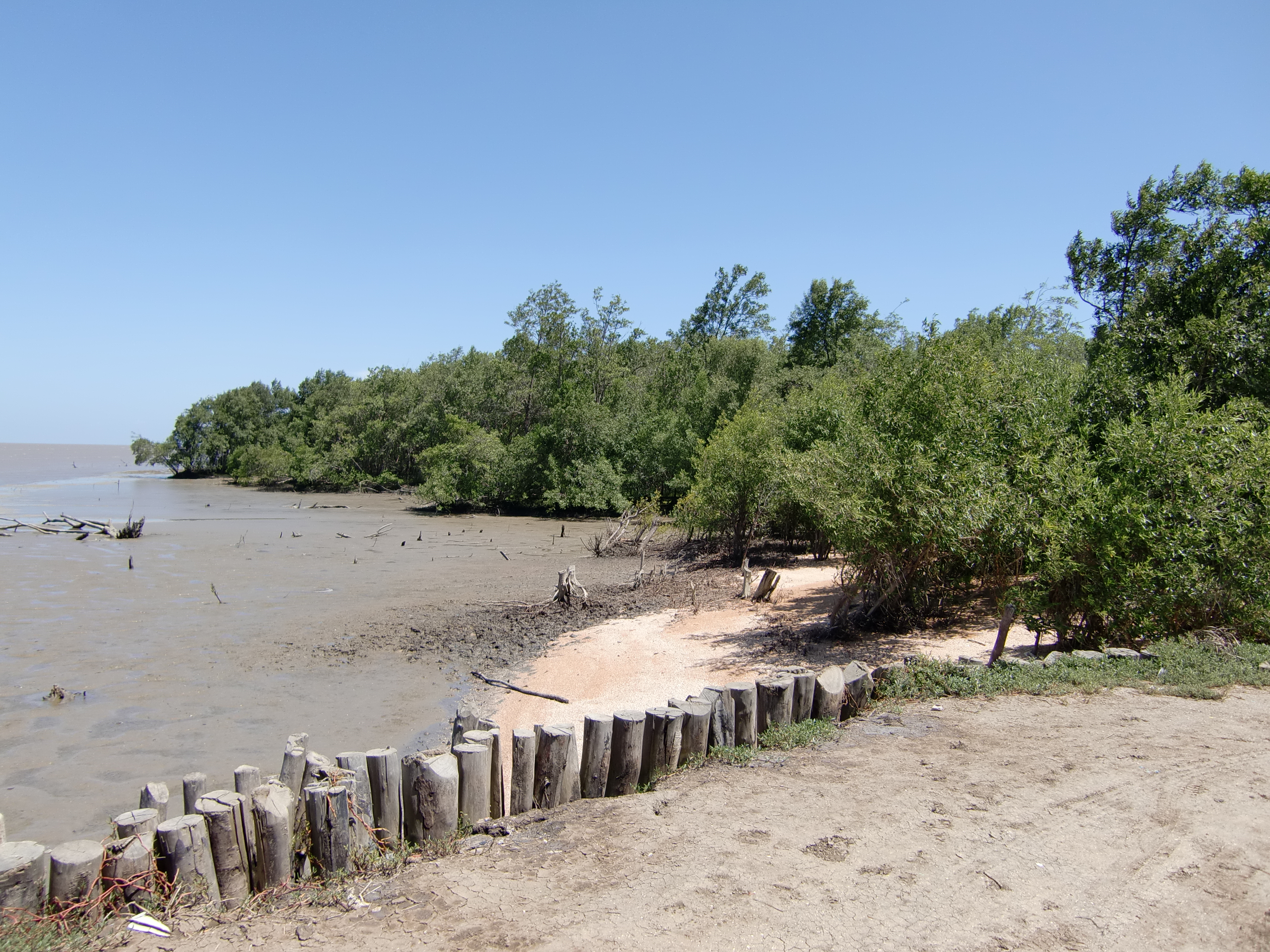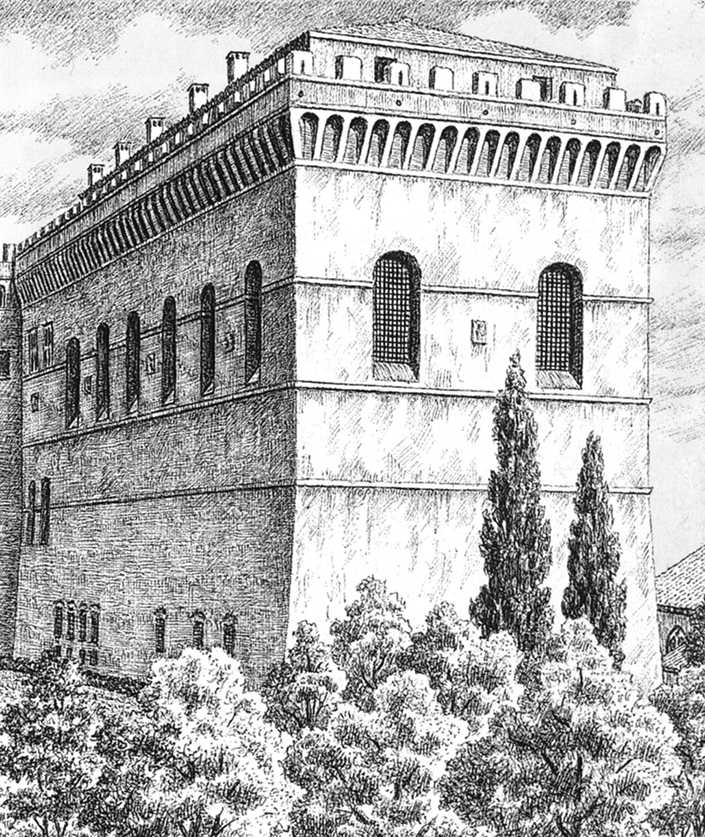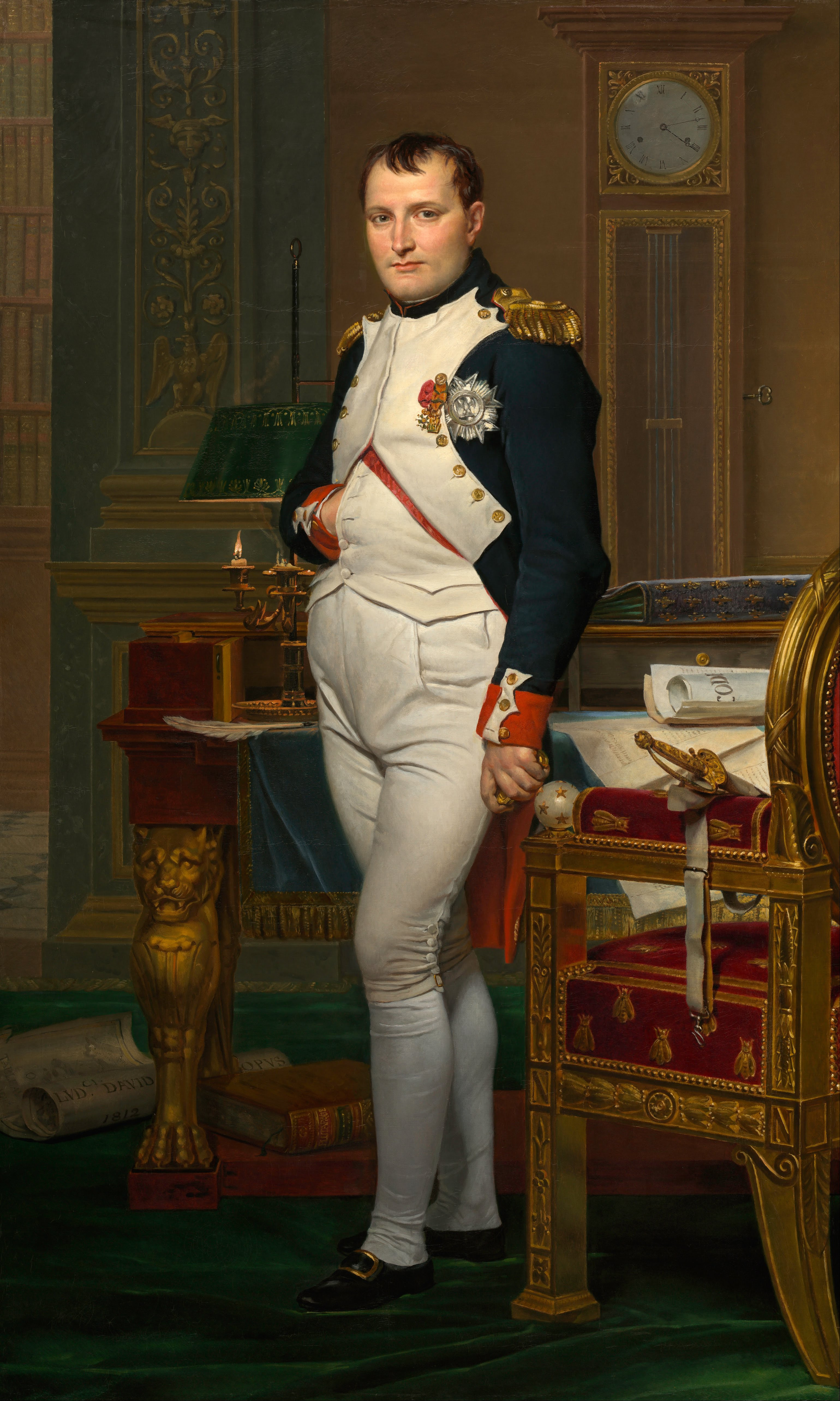|
Saint Joseph's Church, Iracoubo
Saint Joseph's Church (French: ''Église Saint-Joseph d'Iracoubo'') is a Roman Catholic church located in Iracoubo, French Guiana, France. The church is known for its elaborate decorations on the walls and ceiling created by Pierre Huguet, a convict of the penal colony. The church became a historic monument in 1978. History Father Prosper Raffray arrived in Iracoubo on 6 March 1866. At the time, the village was home to about 500 to 600 people, and the church was located in a shed. Raffray set out to create a model village, and built a school, a clergy house and a real church. Construction of the Saint Joseph's Church started in 1887, and the church was consecration, consecrated on 6 January 1893. Pierre Huguet, a resident of Clermont-Ferrand, was sentenced to 20 years for burglary in 1889, and shipped to the penal colony of French Guiana. In 1893, he arrived at Camp Iracoubo, and started to paint and decorate the inside of the church. During his time at Iracoubo, Huguet decora ... [...More Info...] [...Related Items...] OR: [Wikipedia] [Google] [Baidu] |
Iracoubo, French Guiana
Iracoubo is a commune on the coast of French Guiana, an overseas region and department of France located in South America]. Geography The settlement of Iracoubo, seat of the commune, is located between the settlement of Sinnamary and the hamlet of Organabo. The village of Bellevue is west of Iracoubo. Trou Poisson, a near abandoned village is located to the south. The village has a cemetery of priests deported during the French revolution. History The commune was originally settled by Amerindians near Organabo. The first settlers arrived in 1626, but were driven back. In 1765, the Galibis who had left the area for Suriname because an epidemic had broken out, returned. In the beginning of the 19th century, Iracoubo started as a cotton plantation owned by Colonel Jacquet. In 1859, the cotton shed is donated to the community to serve as church. During the late 19th century indigenous Kalina lived along the Rococoua river in Counama and Organabo. In 1886, Father Raffray ... [...More Info...] [...Related Items...] OR: [Wikipedia] [Google] [Baidu] |
Sistine Chapel
The Sistine Chapel (; la, Sacellum Sixtinum; it, Cappella Sistina ) is a chapel in the Apostolic Palace, the official residence of the pope in Vatican City. Originally known as the ''Cappella Magna'' ('Great Chapel'), the chapel takes its name from Pope Sixtus IV, who had it built between 1473 and 1481. Since that time, the chapel has served as a place of both religious and functionary papal activity. Today, it is the site of the papal conclave, the process by which a new pope is selected. The fame of the Sistine Chapel lies mainly in the frescoes that decorate the interior, most particularly the Sistine Chapel ceiling and ''The Last Judgment'', both by Michelangelo. During the reign of Sixtus IV, a team of Renaissance painters that included Sandro Botticelli, Pietro Perugino, Pinturicchio, Domenico Ghirlandaio and Cosimo Rosselli, created a series of frescos depicting the ''Life of Moses'' and the ''Life of Christ'', offset by papal portraits above and '' trompe-l' ... [...More Info...] [...Related Items...] OR: [Wikipedia] [Google] [Baidu] |
19th-century Roman Catholic Church Buildings In France
The 19th (nineteenth) century began on 1 January 1801 (Roman numerals, MDCCCI), and ended on 31 December 1900 (Roman numerals, MCM). The 19th century was the ninth century of the 2nd millennium. The 19th century was characterized by vast social upheaval. Slavery was abolitionism, abolished in much of Europe and the Americas. The Industrial Revolution, First Industrial Revolution, though it began in the late 18th century, expanding beyond its British homeland for the first time during this century, particularly remaking the economies and societies of the Low Countries, the Rhineland, Northern Italy, and the Northeastern United States. A few decades later, the Second Industrial Revolution led to ever more massive urbanization and much higher levels of productivity, profit, and prosperity, a pattern that continued into the 20th century. The Gunpowder empires, Islamic gunpowder empires fell into decline and European imperialism brought much of South Asia, Southeast Asia, and almost ... [...More Info...] [...Related Items...] OR: [Wikipedia] [Google] [Baidu] |
Roman Catholic Churches Completed In 1893
Roman or Romans most often refers to: * Rome, the capital city of Italy * Ancient Rome, Roman civilization from 8th century BC to 5th century AD *Roman people, the people of ancient Rome *''Epistle to the Romans'', shortened to ''Romans'', a letter in the New Testament of the Christian Bible Roman or Romans may also refer to: Arts and entertainment Music *Romans (band), a Japanese pop group * ''Roman'' (album), by Sound Horizon, 2006 * ''Roman'' (EP), by Teen Top, 2011 *"Roman (My Dear Boy)", a 2004 single by Morning Musume Film and television *Film Roman, an American animation studio * ''Roman'' (film), a 2006 American suspense-horror film * ''Romans'' (2013 film), an Indian Malayalam comedy film * ''Romans'' (2017 film), a British drama film * ''The Romans'' (''Doctor Who''), a serial in British TV series People * Roman (given name), a given name, including a list of people and fictional characters * Roman (surname), including a list of people named Roman or Romans *Ῥωμ� ... [...More Info...] [...Related Items...] OR: [Wikipedia] [Google] [Baidu] |
Buildings And Structures In Iracoubo
A building, or edifice, is an enclosed structure with a roof and walls standing more or less permanently in one place, such as a house or factory (although there's also portable buildings). Buildings come in a variety of sizes, shapes, and functions, and have been adapted throughout history for a wide number of factors, from building materials available, to weather conditions, land prices, ground conditions, specific uses, prestige, and aesthetic reasons. To better understand the term ''building'' compare the list of nonbuilding structures. Buildings serve several societal needs – primarily as shelter from weather, security, living space, privacy, to store belongings, and to comfortably live and work. A building as a shelter represents a physical division of the human habitat (a place of comfort and safety) and the ''outside'' (a place that at times may be harsh and harmful). Ever since the first cave paintings, buildings have also become objects or canvasses of much artisti ... [...More Info...] [...Related Items...] OR: [Wikipedia] [Google] [Baidu] |
Roman Catholicism In French Guiana
The Catholic Church in French Guiana is part of the worldwide Catholic Church, under the spiritual leadership of the Pope in Rome. Around 75% of the population is Catholic and the dependency forms a single diocese - the Diocese of Cayenne. Erected as the apostolic prefecture of French Guiana-Cayenne in 1651, it remained a prefecture until elevated to a Vicariate in January 1933, and finally to the Diocese of Cayenne in February 1956. The Diocese is currently a suffragan of the Archdiocese of Fort-de-France et Saint-Pierre on the island of Martinique. The current bishop is Emmanuel Marie Philippe Louis Lafont, appointed in June 2004. That was actually the former bishop but the Wikipedia editors have not updated it. The new bishop is Louis Sankalé. See also *Pan-Amazonian Ecclesial Network (REPAM) References External links catholic-hierarchy.org Religion in French Guiana French Guiana French Guiana French Guiana ( or ; french: link=no, Guyane ; gcr, label=Frenc ... [...More Info...] [...Related Items...] OR: [Wikipedia] [Google] [Baidu] |
Overseas France
Overseas France (french: France d'outre-mer) consists of 13 French-administered territories outside Europe, mostly the remains of the French colonial empire that chose to remain a part of the French state under various statuses after decolonization. They are part of the European Union. This collective name is used in everyday life in France but is not an administrative designation in its own right. Instead, the five overseas regions have exactly the same administrative status as the metropolitan regions; the five overseas collectivities are semi-autonomous; and New Caledonia is an autonomous territory. Overseas France includes island territories in the Atlantic, Pacific and Indian Oceans, French Guiana on the South American continent, and several peri-Antarctic islands as well as a claim in Antarctica. Excluding the district of Adélie Land, where French sovereignty is effective ''de jure'' by French law, but where the French exclusive claim on this part of Antarctica is ... [...More Info...] [...Related Items...] OR: [Wikipedia] [Google] [Baidu] |
Naïve Art
Naïve art is usually defined as visual art that is created by a person who lacks the formal education and training that a professional artist undergoes (in anatomy, art history, technique, perspective, ways of seeing). When this aesthetic is emulated by a trained artist, the result is sometimes called ''primitivism'', ''pseudo-naïve art'', or ''faux naïve art''. Unlike folk art, naïve art does not necessarily derive from a distinct popular cultural context or tradition; indeed, at least in the advanced economies and since the Printing Revolution, awareness of the local fine art tradition has been inescapable, as it diffused through popular prints and other media. Naïve artists are aware of "fine art" conventions such as graphical perspective and compositional conventions, but are unable to fully use them, or choose not to. By contrast, outsider art (''art brut'') denotes works from a similar context but which have only minimal contact with the mainstream art world. ... [...More Info...] [...Related Items...] OR: [Wikipedia] [Google] [Baidu] |
Fresco
Fresco (plural ''frescos'' or ''frescoes'') is a technique of mural painting executed upon freshly laid ("wet") lime plaster. Water is used as the vehicle for the dry-powder pigment to merge with the plaster, and with the setting of the plaster, the painting becomes an integral part of the wall. The word ''fresco'' ( it, affresco) is derived from the Italian adjective ''fresco'' meaning "fresh", and may thus be contrasted with fresco-secco or secco mural painting techniques, which are applied to dried plaster, to supplement painting in fresco. The fresco technique has been employed since antiquity and is closely associated with Italian Renaissance painting. The word ''fresco'' is commonly and inaccurately used in English to refer to any wall painting regardless of the plaster technology or binding medium. This, in part, contributes to a misconception that the most geographically and temporally common wall painting technology was the painting into wet lime plaster. Even in app ... [...More Info...] [...Related Items...] OR: [Wikipedia] [Google] [Baidu] |
Roman Catholic Church
The Catholic Church, also known as the Roman Catholic Church, is the largest Christian church, with 1.3 billion baptized Catholics worldwide . It is among the world's oldest and largest international institutions, and has played a prominent role in the history and development of Western civilization. O'Collins, p. v (preface). The church consists of 24 ''sui iuris'' churches, including the Latin Church and 23 Eastern Catholic Churches, which comprise almost 3,500 dioceses and eparchies located around the world. The pope, who is the bishop of Rome, is the chief pastor of the church. The bishopric of Rome, known as the Holy See, is the central governing authority of the church. The administrative body of the Holy See, the Roman Curia, has its principal offices in Vatican City, a small enclave of the Italian city of Rome, of which the pope is head of state. The core beliefs of Catholicism are found in the Nicene Creed. The Catholic Church teaches that it is t ... [...More Info...] [...Related Items...] OR: [Wikipedia] [Google] [Baidu] |
Penal Colony
A penal colony or exile colony is a settlement used to exile prisoners and separate them from the general population by placing them in a remote location, often an island or distant colonial territory. Although the term can be used to refer to a correctional facility located in a remote location, it is more commonly used to refer to communities of prisoners overseen by wardens or governors having absolute authority. Historically penal colonies have often been used for penal labour in an economically underdeveloped part of a state's (usually colonial) territories, and on a far larger scale than a prison farm. British Empire With the passage of the Transportation Act 1717, the British government initiated the penal transportation of indentured servants to Britain's colonies in the Americas. British merchants would be in charge of transporting the convicts across the Atlantic, where in the colonies their indentures would be auctioned off to planters. Many of the indentur ... [...More Info...] [...Related Items...] OR: [Wikipedia] [Google] [Baidu] |
Burglary
Burglary, also called breaking and entering and sometimes housebreaking, is the act of entering a building or other areas without permission, with the intention of committing a criminal offence. Usually that offence is theft, robbery or murder, but most jurisdictions include others within the ambit of burglary. To commit burglary is to ''burgle'', a term back-formed from the word ''burglar'', or to ''burglarize''. Etymology Sir Edward Coke (1552–1634) explains at the start of Chapter 14 in the third part of '' Institutes of the Lawes of England'' (pub. 1644), that the word ''Burglar'' ("''or the person that committeth burglary''"), is derived from the words ''burgh'' and ''laron'', meaning ''house-thieves''. A note indicates he relies on the ''Brooke's case'' for this definition. According to one textbook, the etymology originates from Anglo-Saxon or Old English, one of the Germanic languages. (Perhaps paraphrasing Sir Edward Coke:) "The word ''burglar'' comes from the two ... [...More Info...] [...Related Items...] OR: [Wikipedia] [Google] [Baidu] |





.jpg)
.jpg)
